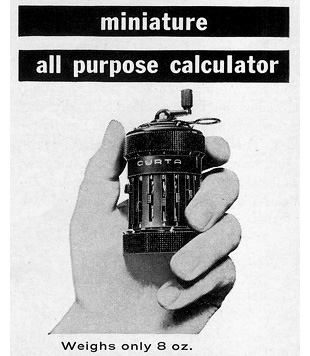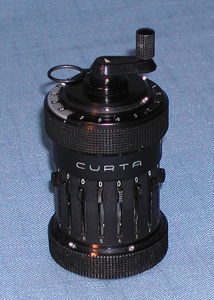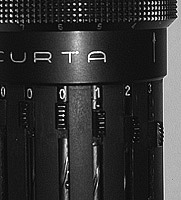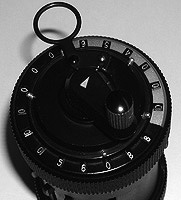 |
|
|
|

|

|
The incredible Curta |
|
|
|
|
When I was a student there were these ads in
Scientific American magazine, advertising a "miniature all-purpose
calculator". I didn’t pay much attention then, and (alas) I didn’t
think to buy one. By the time I did, their price had skyrocketed. I
shouldn’t complain though… a Curta calculator is well worth any price! This is the ultimate mechanical pocket calculator; a true marvel of miniaturization and ingenious design. It does the same four arithmetical operations done by a pinwheel calculator like my Odhner; but the Odhner and its many clones weighed in at 6 kilograms or so, whereas the Curta sits comfortably in your hand, providing speed, convenience and precision in a mechanism weighing a mere 230 grams. It also sounds different: where the Odhner calculates with a good deal of noise, the Curta whirs as silently as the peppermill it resembles. |
 Click photo to see entire ad |
|
|
|
crank 4 times. The result of the calculation, 56088, shows in
the result readout (black part of the top), and the multiplier (456)
shows in the counter readout (white part of the top). This process
takes under 10 seconds; in 20, you can do 1374214 X 49862 to get 68521058468. Curtas come in two models; mine is the Type I, supporting 8 digits in the input register (the set of sliders on the cylinder’s side) and 11 digits in the result register. The Type II has more digits, so it’s built into a fatter cylinder.
Exhibit provenance:
More info: |
|
|
|
|
|
|
|
Home | HOC | Fractals | Miscellany | About | Contact Copyright © 2005 N. Zeldes. All rights reserved. |
|


